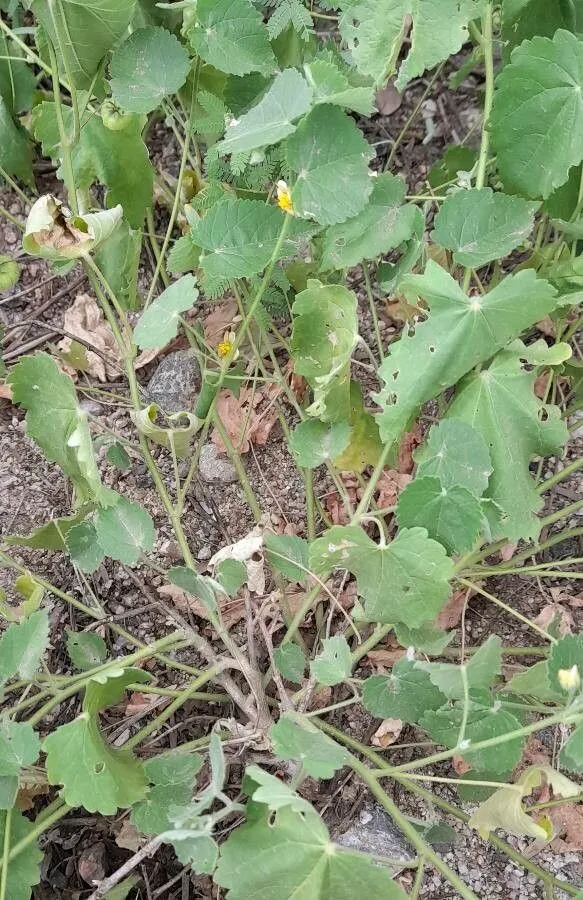
Author: (L.) Brizicky
Bibliography: J. Arnold Arbor. 49: 279 (1968)
Year: 1968
Status: accepted
Rank: species
Genus: Herissantia
Vegetable: False
Observations: Trop. & Subtrop. America
The Lantern vine, scientifically named Herissantia crispa, is a remarkable plant belonging to the Malvaceae family. This captivating species was authoritatively described by (L.) Brizicky, with significant documentation provided in the 1968 edition of the Journal of the Arnold Arboretum, specifically noted on page 279 of volume 49.
Primarily thriving in tropical and subtropical regions of the Americas, the Lantern vine is known for its unique and ornamental foliage which has made it a favored choice for gardens and landscapes in these climates. The vine’s common name stems from the intriguing shape and appearance of its flowers and seed pods, which resemble tiny lanterns dangling delicately from its stems.
Being a member of the Malvaceae family, Herissantia crispa shares a heritage with other well-known plants like hibiscus and cotton, showcasing a similar resilience and adaptability that is characteristic of this botanical group. Whether found in lush tropical forests or cultivated in temperate garden settings, the Lantern vine is appreciated not only for its aesthetic value but also for its modest care requirements, making it accessible to a wide range of plant enthusiasts.
In essence, the Lantern vine is a vibrant and distinctive addition to the botanical world, encapsulating the beauty and diversity of tropical and subtropical flora. It stands as a testament to nature’s ingenuity in creating forms and structures that captivate and inspire.
Eng: bladdermallow, bladder-mallow
En: Lantern Vine, Bladdermallow, Bladder mallow, Bladder-mallow
Zh: 泡果苘
© copyright of the Board of Trustees of the Royal Botanic Gardens, Kew.
© copyright of the Board of Trustees of the Royal Botanic Gardens, Kew.
© copyright of the Board of Trustees of the Royal Botanic Gardens, Kew.
Taken Dec 30, 2021 by Trap Hers (cc-by-sa)
Taken Jan 7, 2022 by Trap Hers (cc-by-sa)
Taken Jan 1, 1900 by EOL − Keystone Foundation (cc-by)
Taken Jan 1, 1900 by EOL − Acevedo, P. (cc-by-nc-sa)
Taken Jan 1, 1900 by EOL − Keystone Foundation (cc-by)
Taken Jan 7, 2022 by Trap Hers (cc-by-sa)
Taken Oct 24, 2021 by holunder niki (cc-by-sa)
Taken Jan 7, 2022 by Trap Hers (cc-by-sa)
Taken Jan 7, 2022 by Trap Hers (cc-by-sa)
Growth habit>: Subshrub, Forb/herb
Family: Myrtaceae Author: (F.Muell.) K.D.Hill & L.A.S.Johnson Bibliography: Telopea 6: 402 (1995) Year: 1995 Status:…
Family: Rubiaceae Author: Pierre ex A.Froehner Bibliography: Notizbl. Bot. Gart. Berlin-Dahlem 1: 237 (1897) Year:…
Family: Sapindaceae Author: Koidz. Bibliography: J. Coll. Sci. Imp. Univ. Tokyo 32(1): 38 (1911) Year:…
Family: Asteraceae Author: A.Gray Bibliography: Pacif. Railr. Rep.: 107 (1857) Year: 1857 Status: accepted Rank:…
Family: Fabaceae Author: Medik. Bibliography: Vorles. Churpfälz. Phys.-Ökon. Ges. 2: 398 (1787) Year: 1787 Status:…
Family: Aspleniaceae Author: (Cav.) Alston Bibliography: Bull. Misc. Inform. Kew 1932: 309 (1932) Year: 1932…